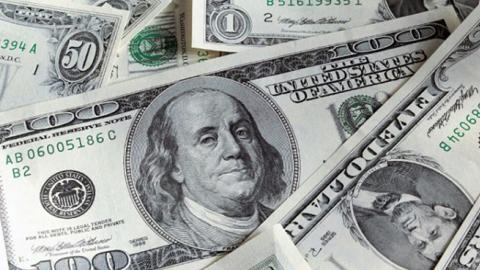If you think America’s fiscal mess—a deficit in excess of $1 trillion every year for as far ahead as the budgeteer’s eye can see—is no concern of yours, think again. Democrats about to control of the House of Representatives are as eager as President Trump to spend $200 billion over ten years on infrastructure, but the agreement on spending does not extend to an agreement on paying for all those bridges and roads. And the two parties agree on the need to cut taxes for the middle class, but not on which taxes to raise to offset the revenue loss. Agreements to spend come easily; to pay, not so much.
Even without more spending, the deficits and the resulting mountain of government IOUs are almost certain to tempt politicians to take the easy way out, and let inflation solve the problem they are creating for the economy. Then they can pay off the interest on the debt with cheap, devalued dollars that buy a lot less than the dollars investors lent to the government.
New lenders know that is coming, and so already are demanding higher interest rates to compensate them for that risk. That means interest rates on mortgages and auto purchases will head up even more, with a bit of a push from the Federal Reserve, which is raising its benchmark rate to get it to a level that is not throwing fuel on an already hot economy. Consumers who lease rather than buy their vehicles are suffering from the equivalent of sticker shock.
Then there is the big world out there. When America’s market for its government bonds catch a cold, the world sneezes. The upswing in rates on government IOUs is sucking investment out of emerging economies, forcing them to raise their interest rates to prevent capital flight. Which then slows their already sluggish economies even more. Worse still, that strengthens the dollar, forcing those countries to pay more for the dollars they need to buy oil and pay interest on any dollar-denominated debt they may have incurred. Which, finally, has to affect their ability to import stuff from America.
If you don’t think all of this can happen, and at an accelerating rate, ask yourself this question: With interest rates at their current level, say something over 3 percent on long-term government IOUs, would you lend money to a borrower revealing the following facts on his or her request to borrow your money?
* I plan to spend about $1 trillion more this year than my income. That’s twice as much red ink as I spilled in 2017. And future years won’t be any better.
* The debt I owe has risen from about $5 trillion to almost $16 trillion in the past decade.
* Two years from now, I will have to spend more to cover interest payments on what I have already borrowed than on medical costs (Medicaid). By 2023, I will pay more in interest than on securing my home and family (national defence). By 2025, interest paid out will exceed all my other expenses.
* If there is a recession between now and 2025, which is almost a certainty, my ledgers will be in even worse shape.
* Oh, yes. I have a printing press in my basement, so if I run short I’ll print off all the devalued greenbacks I need to pay interest on what you lend me.
* I hope you find the current interest rate of a bit more than 3.1 percent on 10-year treasuries high enough to cover your risk, and 4.76 percent enough to persuade you to lend me money for 30 years so that I can buy a house.
Would you be reluctant to make such a loan? This might relax you, if you believe nothing is impossible: During his election campaign candidate Trump promised to pay off the national debt in eight years. So you only have to wait six years to get back every dollar you have loaned the government.
Doubt that? Then consider this: The president has promised to work with Democrats on the rising debt and other budget matters—unless they insist on investigating his businesses, personal tax returns, his family, his campaign financing, and a host of other matters. So if the Democrats, especially the 84 Democratic women in the new Congress, swallow their rage, tear up the 100 subpoenas already drafted, and sit down, lamb-like, with the presidential lion, a deal to repay you in real dollars can be hatched. If you think that is likely you haven’t followed the recent campaigns: These women entered politics specifically to rid the nation of this misogynist president.
Unless political peace breaks out, the only way politicians can meet interest payments is to let inflation rip, devalue the dollar. If sanity does prevail, there is still time for the president and Congress to back away from the fiscal ledge on which they are perched, and agree on long-term spending restraint. Recall: in February, when the politicians found the previously agreed spending cap inconvenient, they raised it by $300 billion over two years, the money to be split between the military (Republicans) and social spending (Democrats). If an agreement to keep the new cap in place and to reform social spending can be worked out, inflation might not be necessary to make the debt burden tolerable.
Of course, if the economy grows faster than the Congressional Budget Office expects—1.7 percent from 2020 through 2026—the problem might go away. Significantly higher growth might generate sufficient tax revenues to shrink the deficit to levels that investors do not find so scary as to force them to demand ever-higher interest rates in order to part with their cash.
Or if the 2020 elections produce a unified government that sees a sensible fiscal policy as essential to its prospects in 2024.
And then there is the tooth fairy . . .



















